Jacob Neusner Select Works on Historical Judaism (12 vols.)
Digital Logos Edition
Overview
Renowned scholar of Judaic studies, Jacob Neusner, offers a comprehensive history that makes sense of Judaism on its own terms. Amassing a wealth of knowledge from numerous scholars of Judaic studies, Neusner expands on a wide range of topics concerning the history of Judaism, beginning with the first-century Jews, and continuing on through such areas as the Pharisees, the Old Testament, the Babylonian Talmud, and the Torah. Neusner and his colleagues also comment on more modern eras of Judaic history, such as the Holocaust and Russian Jewry.
In the Logos edition, this collection is enhanced by amazing functionality. Scripture citations link directly to English translations, and important terms link to dictionaries, encyclopedias, and a wealth of other resources in your digital library. Perform powerful searches to find exactly what you’re looking for. Take the discussion with you using tablet and mobile apps. With Logos Bible Software, the most efficient and comprehensive research tools are in one place, so you get the most out of your study.
Looking for more from distinguished Jewish scholar Jacob Neusner? Try the Jacob Neusner Jewish Studies Bundle, 99 volumes on Jewish history, religion, philosophy, and more.
This title is included in the following collections
You can save when you purchase this product as part of a collection.
Jacob Neusner Jewish Studies B...
$1,214.99$1,214.99Wipf and Stock Ultimate Collec...
$11,593.84$8,499.99

- Studies the politics, culture, and sociology of Judaism
- Gathers a wealth of research from renowned scholars of Judaic studies
- Includes analysis of recent events in Jewish history
- Title: Jacob Neusner Select Works on Historical Judaism
- Publisher: Wipf & Stock
- Volumes: 12
- Pages: 3,261
- Resource Type: Monographs
- Topic: Judaica
- First Century Judaism in Crisis by Jacob Neusner
- From Politics to Piety: The Emergence of Pharisaic Judaism by Jacob Neusner
- Judaic Perspectives on Ancient Israel Edited by Jacob Neusner, Baruch A. Levine, and Ernest S. Frerichs
- Judaism in Society: The Evidence of the Yerushalmi: Toward the Natural History of a Religion by Jacob Neusner
- Religions in Antiquity: Essays in Memory of Erwin Ramsdell Goodenough Edited by Jacob Neusner
- Stranger at Home: “The Holocaust,” Zionism, and American Judaism by Jacob Neusner
- The Idea of Purity in Ancient Judaism: The Haskell Lectures, 1972-1973 by Jacob Neusner
- The Transformation of Judaism: From Philosophy to Religion by Jacob Neusner
- There We Sat Down: Talmudic Judaism in the Making by Jacob Neusner
- Torah Through the Ages: A Short History of Judaism by Jacob Neusner
- Soviet Views of Talmudic Judaism: Five Papers by Yu. A. Solodukho in English Translation by Yu. A. Solodukho and Jacob Neusner
- The Formation of the Babylonian Talmud: Studies in the Achievements of Late Nineteenth and Twentieth Century Historical Literary-Critical Research Edited by Jacob Neusne
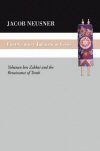
A crisis was taking place in Palestine—a conflict between the Romans’ need for expanding their empire, trade, and strategic locale, and the Jews’ need to serve God with their laws and land. Beginning with the destruction of the second temple in A.D. 70, Jacob Neusner presents a picture of Pharisee Rabbi Yohanan ben Zakkai, leader of Jewish reconstruction and founder of contemporary Judaism as we know it today. This volume describes how the Torah affected Yohanan’s education, war activities, social problems, and theological issues.
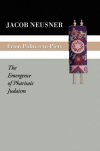
Jacob Neusner analyzes descriptions of the Pharisees from historical sources of ancient Judaism and Christianity in order to form an accurate account about Pharisaic Judaism.
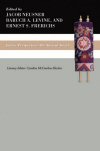
This volume assembles a representative statement of Judaic learning on the Old Testament as it is studied today by many of the most important Jewish Bible scholars of the age. A host of internationally known scholars—American, European, and Israeli—present a variety of rich perspectives on the study and interpretation of the Scriptures revered by both Judaism and Christianity.
These studies make clear that no single Jewish school of biblical scholarship exists. Rather, there is a Jewish approach involving appreciation for Hebrew as a living language. This book addresses such topics as the reality of Jewish settlement in the land of Israel and the continuity of Scripture in the life of Israel. Neusner and his coeditors, Baruch A. Levine and Ernest S. Frerichs, demonstrate the value of critical scholarly discourse on the Hebrew Scripture by Jewish scholars for both Christian and Jewish communities.
Baruch A. Levine is emeritus professor of Hebrew and Judaic Studies at New York University. He is the author of several books on the Old Testament, including The JPS Torah Commentary: Leviticus, The Anchor Yale Bible: Numbers 1-20, and The Anchor Yale Bible: Numbers 21-36.
Ernest S. Frerichs was a Hebrew studies scholar. He is the coauthor of several books on the Old Testament, including Exodus: The Egyptian Evidence, Religion, Science, and Magic: In Concert and In Conflict, and Diasporas in Antiquity.
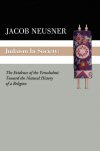
By studying the texts which form the foundation of Judaism, such as the Yerushalmi (the Jerusalem Talmud), Jacob Neusner attempts to determine how one moves from a text to its larger contexts and how one reconstructs a social world from a single document. He describes the setting of early rabbinic Judaism in late antiquity and gives an overview of the formulation of early Jewish texts. His ultimate quest is for certainty, authority, and salvation in the realm of Judaism.

Written in honor of professor Erwin Ramsdell Goodenough, former religious history professor and editor of the Journal of Biblical Literature, these essays contribute to the critical discussion of concerns to Goodenough during his lifetime, including the presence of God in biblical religion, the concept of the Messiah, and obedience to the Torah.

Preeminent Judaic scholar and Zionist Jacob Neusner explores the issue he believes to be at the very heart of American Judaism: how two events remote from the experience of most American Jews have become the twin pillars upon which their worldview is built. These two events—the murder of six million Jews between 1933 and 1945 and the subsequent creation of the State of Israel—form what Neusner calls “the myth of the Holocaust and redemption.”
Stranger at Home scrutinizes the paradox of a central myth generated out of events never witnessed and a place never inhabited by the majority of American Jewry.
Written over a period of nearly 20 years, these essays begin with an analysis of the social and psychological problems confronting American Jews, then explore the implications of the two elements that constitute the mythic vision that begins in death (the Holocaust) and is completed by rebirth (Israel.) Finally Neusner offers his view of the role of Zionism for the Jewish community outside of Israel.
Neusner’s penetrating exposition sheds light on the search for an American minority culture for identity in the context of freedom and free choice and on the process of adaptation of an archaic religious tradition to modernity.
Neusner writes with force, clarity, and felicity of style. The work demonstrates that the author would rather live with the serious question, no matter how disturbing, than with a shallow, easy answer.
—Abraham Karp, professor of history and religion, University of Rochester
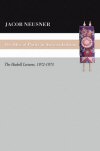
This book contains the text of the Haskell Lectures for 1972–1973, delivered at Oberlin College in 1973, the assignment being four lectures on a topic in post-biblical Judaism. Esteemed scholar Jacob Neusner not only explores the idea of purity in ancient Judaism—he lays out the methodological issues pertinent to the study of any problem in the history of ideas in ancient Talmudic Judaism.

An eminent scholar of the history of Judaism, Jacob Neusner shows how Judaism changed from a philosophy to a religion between 200 and 400 C.E. The Transformation of Judaism is a work both revolutionary in its method and unprecedented in its results. Comparing earlier and later sets of Judaic writings, Neusner sets forth how philosophy–abstract, elegant, orderly, and intellectual–turned into religion – tangible, down-to-earth, chaotic, and concrete. In the process, he offers an account of the birth of Judaism that has become normative. Moreover, Neusner’s methodology can be applied to the study of religions other than Judaism because it examines the underpinnings of how a society sees the world (philosophy), orders itself (politics), and sustains itself (economics).
Neusner provides an entirely fresh approach and a new answer to the central question ‘What is Judaism?’ This book has an important place within the study of the history of religions in general.
—Alan J. Avery-Peck, Kraft-Hiatt Professor in Judaic Studies, College of the Holy Cross
This prolific author provides in this book yet another of his clear and scholarly explorations into the nature of Judaism.
—Peter Byrne, senior lecturer, King's College
The Transformation of Judaism is a serious piece of scholarship, and anyone studying Jewish religious history at the graduate level and above ought to read it.
—William Scott Green, emeritus professor of religious studies, University of Rochester

Orthodox Judaism developed in the period from approximately 100 B.C.E to 640 C.E. It was during this time that the Babylonian Talmud came to prominence through the efforts of the Babylonian rabbinic schools. The Talmud continues to govern the life of traditional Jewry—orthodox and conservative—and provides important guidance for reform Jews as well. Because of the Talmud’s continuing influence, an understanding of this period is crucial to any understanding of present-day Judaism.
Jacob Neusner centers his study on three key words applied to rabbinic Judaism: power—the way in which one man caused another to do his will; myth—the stories people told and the beliefs they held to account for and justify the power-relationships they experienced; and function—how things worked.
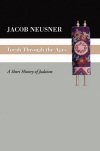
Jacob Neusner selects the central Jewish symbol of Torah and describes its role through the ages. Neusner defines the Torah and relates it to Jewish identity, then describes the formation of the written Torah and the development of the Mishnah after the fall of Jerusalem in 70 C.E. This leads into an explanation of Midrash and the composition of the Talmud. After a discussion of Torah as a symbol, Neusner overviews Maimonides, the Zohar, Reform Judaism and Zionism.

Devotion to the study of the Babylonian Talmud, a document of law and theology completed in the seventh century A.D. and thereafter the primary and authoritative source of Judaic legal and moral teachings, was one of the distinctive traits of Russian Jewry before 1917.
The five papers contained in this volume are important for three reasons. First, they contain important insights and critical perspectives hitherto unavailable to Western scholarship in the history of Judaism in late antiquity. Second, they underline the importance of introducing into the study of Talmudic and other ancient legal literature a concern for the economic foundations of the laws. Third, they provide a glimpse into the mind of a segment of the Soviet Jewish community during its long period of silence, specifically, the segment which evidently attempted to reach an accommodation between the classical Judaic heritage and the new modes of thought and expression under Soviet Communism.
Solodukho made the effort both to preserve the traditions of Talmudic learning acquired in his youth and to master the Marxist hermeneutic which came to dominance in his mature years.
Yu A. Solodukho (1877–1963) was born in Oshmiany, Poland. He studied at the Talmudical Academy of Voloshin and spent his early academic career working on various Hebrew journals. He taught at the Oriental Studies Institute of the Academcy of Sciences of the USSR in Leningrad from 1934 until 1950.
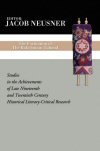
In this collection of essays, Jacob Neusner and other scholars of Judaic studies explore how and when the Babylonian Talmud took shape. Neusner and his colleagues use a source-critical approach to their inquiry by describing the ideas of historians who have completed the most research on the formation of the Babylonian Talmud, thereby summarizing the knowledge on which they base their study. They then similarly analyze the ideas of literary critics who have done research on the Babylonian Talmud. Finally, Neusner and the other contributors compare the existing research with their own findings.
Jacob Neusner is research professor of theology and senior fellow of the Institute of Advanced Theology at Bard College.